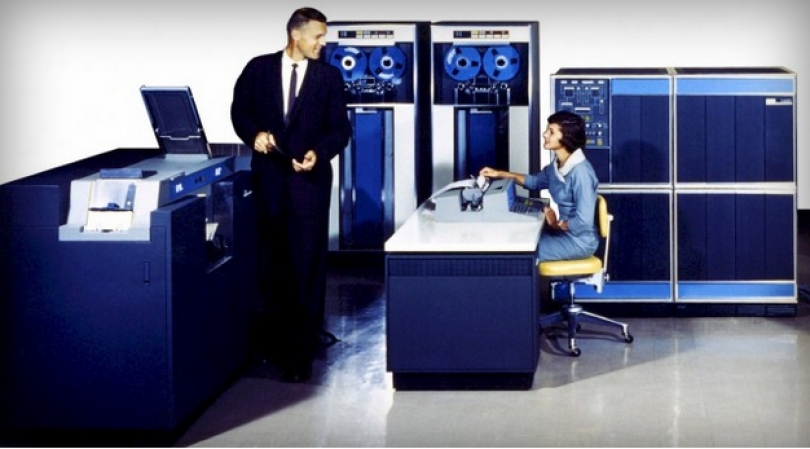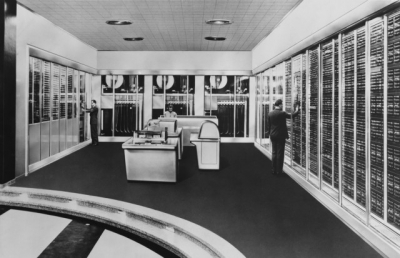Restoring RAM: Fixing memory inside a 50-year-old IBM mainframe
Mainframe computers may seem quaint now, but they ruled the computer industry for decades beginning in the 1950s. A single company dominated the industry for much of that time: IBM.
One of the company’s smaller, but critically important systems was the IBM 1401, a data processing solution first produced in 1959. These low-cost systems (rented for roughly $20K a month in 2015 dollars) relied on a six-bit architecture and utilized ferrite core memory.
Ferrite core memory relies on wires threaded to a series of toroid rings to set a charge that’s either clockwise or counter-clockwise. Bits can be set to either 1 or 0 in this fashion, though the process of reading a bit also resets it (called destructive readout). Unlike modern RAM, cores maintained their charge state when power was deactivated. And unlike modern SRAM, core memory was typically laid out and constructed by hand, which placed sharp limits on its ability to scale. A recent article dives into the challenges of troubleshooting this obsolete memory type and the IBM 1401 itself, and it’s a fascinating look at how different repairing a computer used to be.

Ferrite core memory. Image by Ken Shirriff
The IBM 1401’s core memory is shown above. Each 80×50 grid of wires contains 4,000 memory cores. Each of these plates contains 500 bytes of memory; the 1401’s 4K of memory consisted of eight base plates, and there were 16 plates in the 1406 add-on module. All of the failing planes in this case were located in the same contiguous area of 4K RAM (the 1401 predates the eight-bit standard we use today; it used six-bit characters). As the article notes, the addresses that were failing all ended in 2, 4, and 6 — but disentangling why those addresses were failing took additional time and some intimate knowledge of the system’s memory encoding scheme.
What’s particularly interesting about this system is the degree of documentation IBM provided — hundreds of printed sheets detailing the exact function of every card, wire, and system in the computer — and the sheer physicality of the various components. With just 1-2 transistors per Standard Modular System card, you can see, literally, every component that hooks to every other part of the system. Even the memory is laid out in wire and available for inspection. Every component of the system is documented on paper, even if the aged blueprints are incredibly difficult to read and run to thousands of pages.
Even by the early 1960s, it was obvious that some of these trends could not persist, but one of them — the use of ferrite core memory — hung on until the introduction of DRAM in the early 1970s. The wire layouts and designs of ferrite core memory presented barriers to scaling that miniaturization couldn’t overcome, since most core memory was handmade. Today, we can pack 4K of RAM into structures that strain the limits of the Mark One Eyeball. But it’s fascinating to see the relics of another time, when the structure and logic of computing was something anyone could observe without so much as a microscope.

Administrator
Become industry leaders with a wide range of high quality services, offering excellent customer service with a dedicated team of professionals.













We stay Connected
RSS Twitter Facebook Vimeo Skype